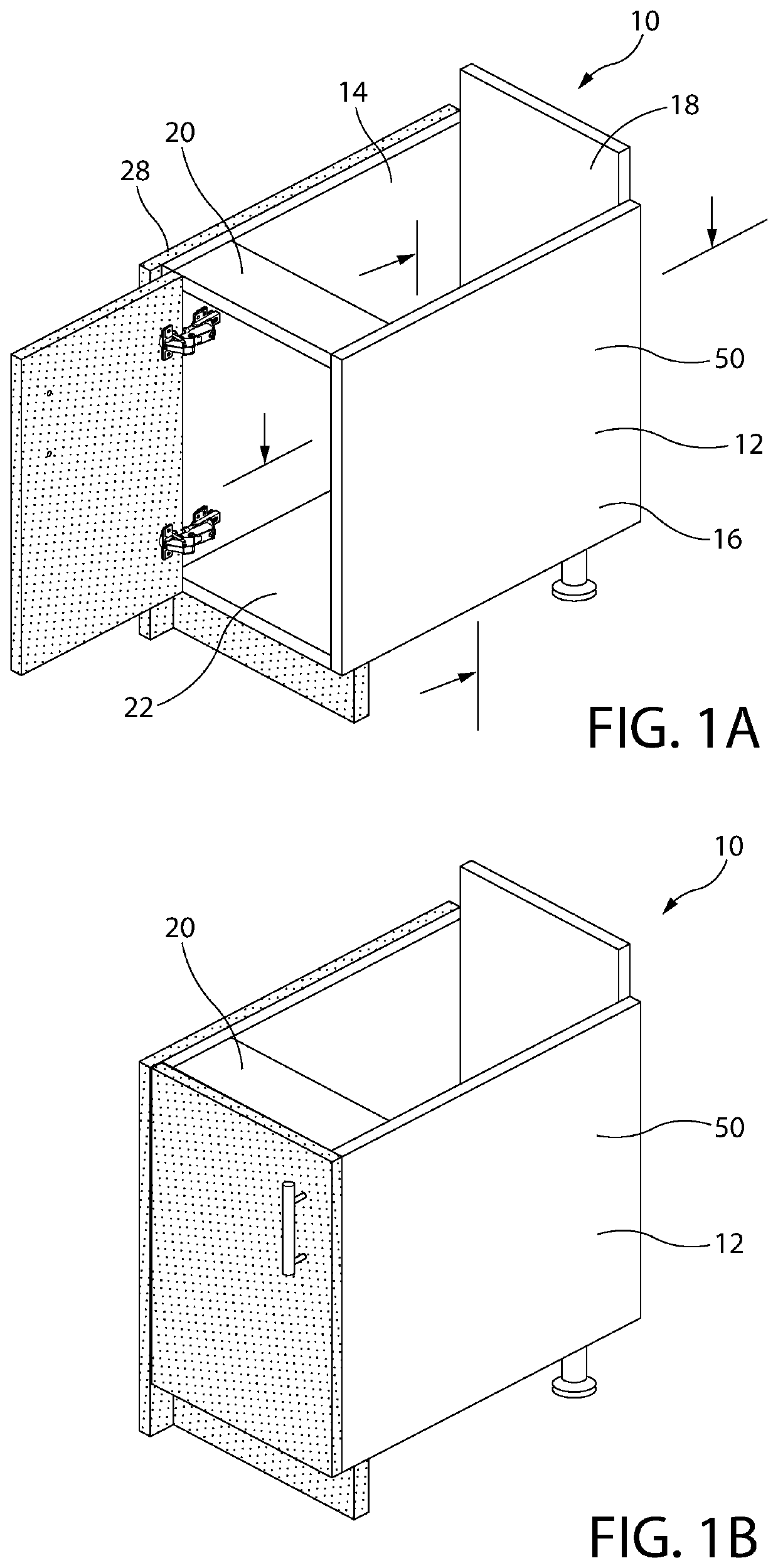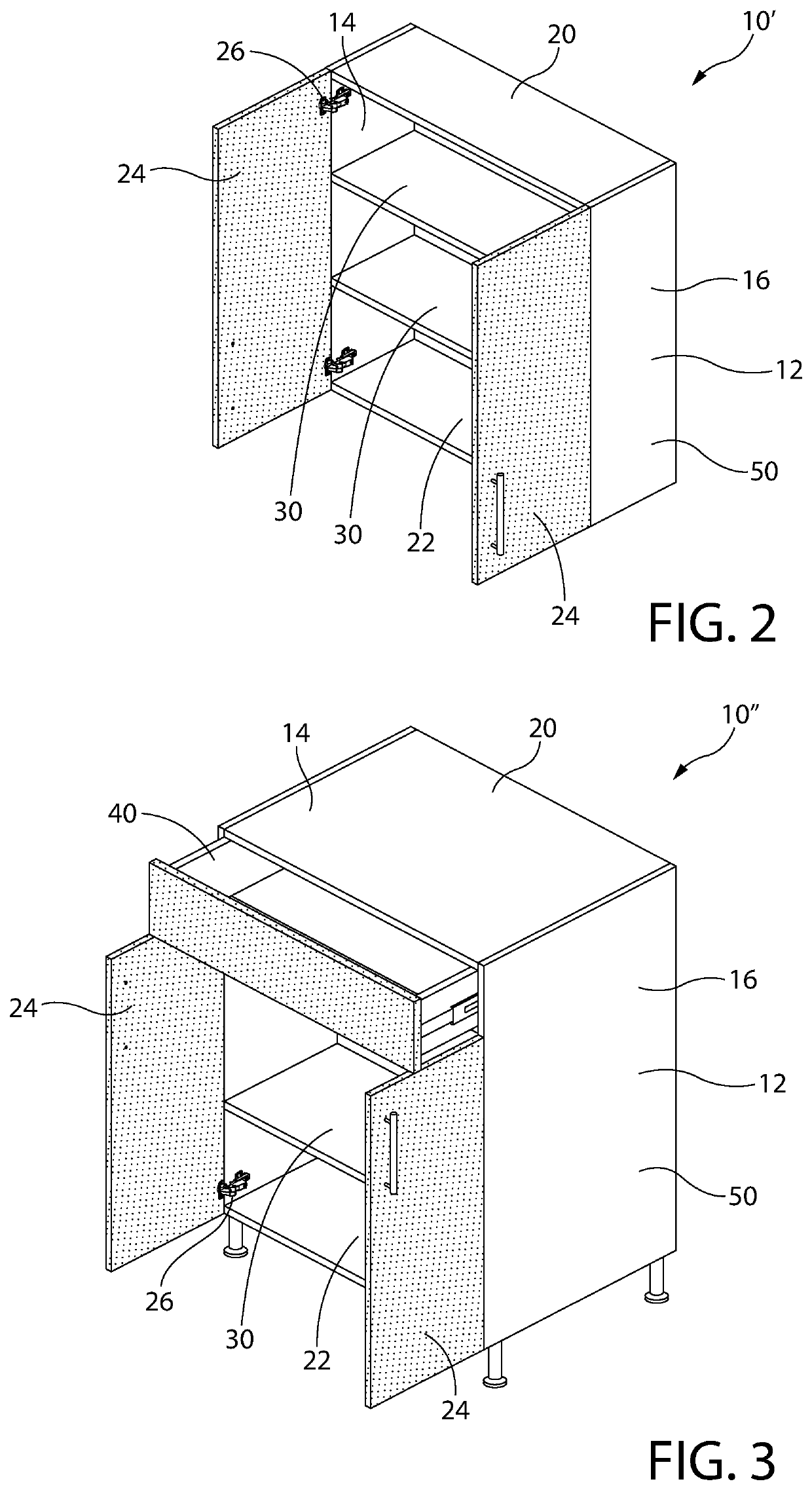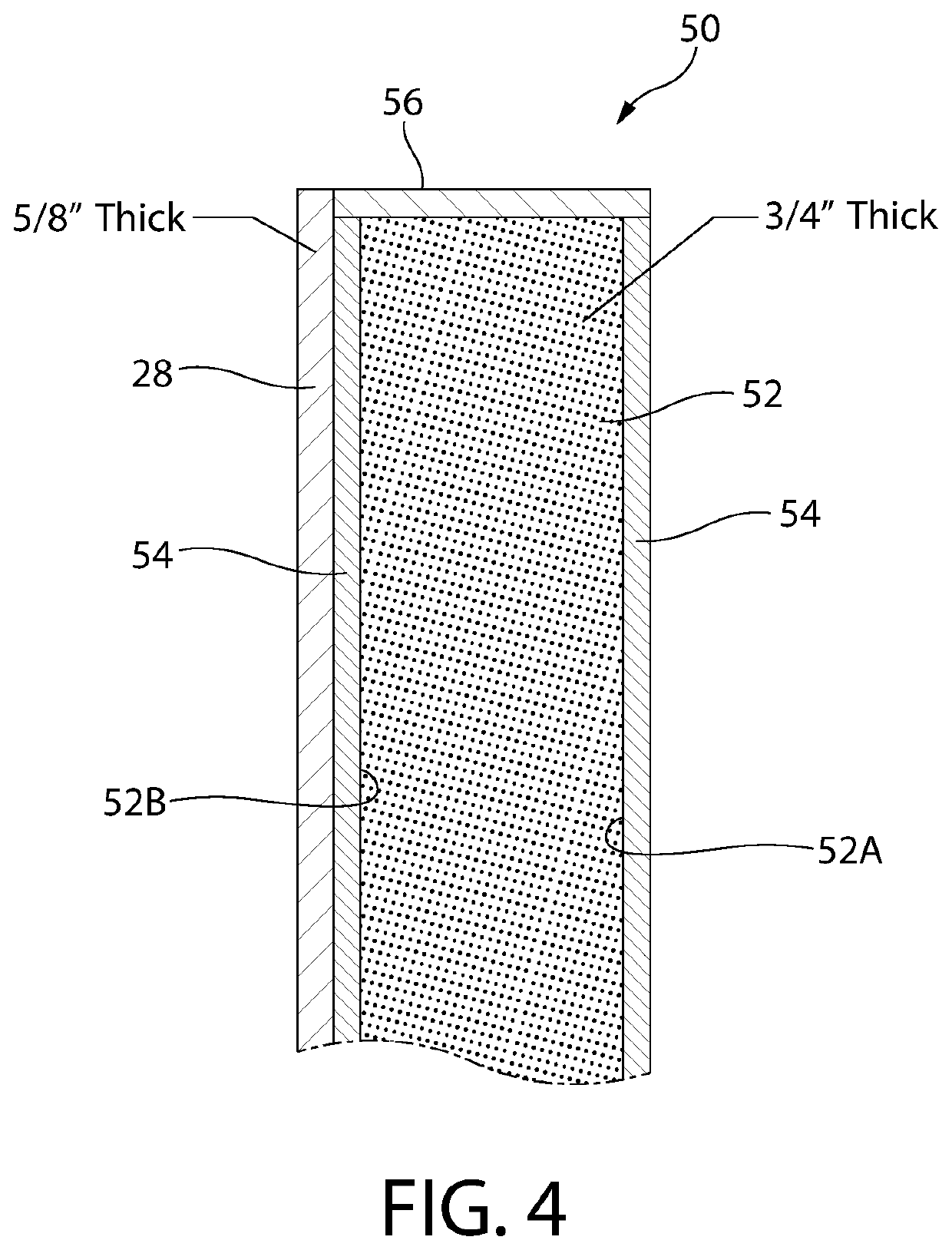Outdoor cabinet
- Summary
- Abstract
- Description
- Claims
- Application Information
AI Technical Summary
Benefits of technology
Problems solved by technology
Method used
Image
Examples
Embodiment Construction
[0015]It should be understood that the phraseology and terminology used below for the purpose of description and should not be regarded as limiting. The use herein of the terms “comprising,”“including,”“having,”“containing,” and variations thereof are meant to encompass the structures and features recited thereafter and equivalents thereof as well as additional structures and features. Unless specified or limited otherwise, the terms “attached,”“mounted,”“affixed,”“connected,”“supported,”“coupled,” and variations thereof are used broadly and encompass both direct and indirect forms of the same.
[0016]The present invention is directed to a combination of the solid, marine-grade thermoplastic polymer, for example, high density polyethylene (HDPE), doors and decorative panels mounted on a waterproof carcass made from an engineered wood (for example, waterproof medium-density fiberboard (MDF)), having a waterproof facing (for example, a resin based facing such as melamine), to provide a ...
PUM
 Login to View More
Login to View More Abstract
Description
Claims
Application Information
 Login to View More
Login to View More - R&D
- Intellectual Property
- Life Sciences
- Materials
- Tech Scout
- Unparalleled Data Quality
- Higher Quality Content
- 60% Fewer Hallucinations
Browse by: Latest US Patents, China's latest patents, Technical Efficacy Thesaurus, Application Domain, Technology Topic, Popular Technical Reports.
© 2025 PatSnap. All rights reserved.Legal|Privacy policy|Modern Slavery Act Transparency Statement|Sitemap|About US| Contact US: help@patsnap.com



